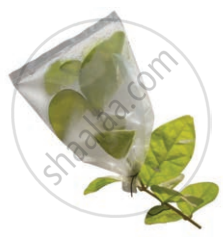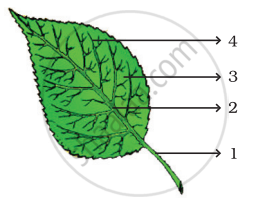Advertisements
Advertisements
प्रश्न
Observe the picture of an activity given as Figure carried out with leaves of plants and polythene bag.

Now answer the following.
- Which process is demonstrated in the activity?
- When will this activity show better results on a bright sunny day or a cloudy day?
- What will you observe in the polythene bag after a few hours of setting up the activity?
- Mention any one precaution you must.
उत्तर
- The process of transpiration is being demonstrate in the given activity. The loss of water in the vapour form from the exposed parts of a plant (mainly leaves) is called transpiration.
- The activity will show better results on a bright sunny day because the rate of transpiration increases in the presence of strong sunlight.
- After a few hours, small drops of water will be seen inside the polythene cover.
- (i) The set-up must be airtight.
(ii) Polythene bag must be dry.
(iii) The twig must be fresh with 10-12 leaves.
APPEARS IN
संबंधित प्रश्न
What are the different types of ve-nation found in the leaves?
Fill in the blank
______is an enlarged, roughly spherical-shaped stem storing food.
State if the following statement is true or false. Correct the statement if it is false.
The leaves of Opuntia are modified into thorns.
State the functions of the following.
Stem tendril
We eat different parts of various plants. Write the part of the plant that we eat.
Apple _________
Answer the following in short.
What is a rhizome
Answer the following in detail
What are the different agents of seed dispersal?
Very Short Answer Type Question:
What is midrib?
Arrange the following in the correct sequence.
Transpiration – Conduction - Absorption – Fixation
Observe Figure and attempt the questions that follow it.

- Label the parts 1, 2, 3 and 4 in the diagram.
- What type of venation does the leaf has?
- What type of venation is seen in grass leaves? .
